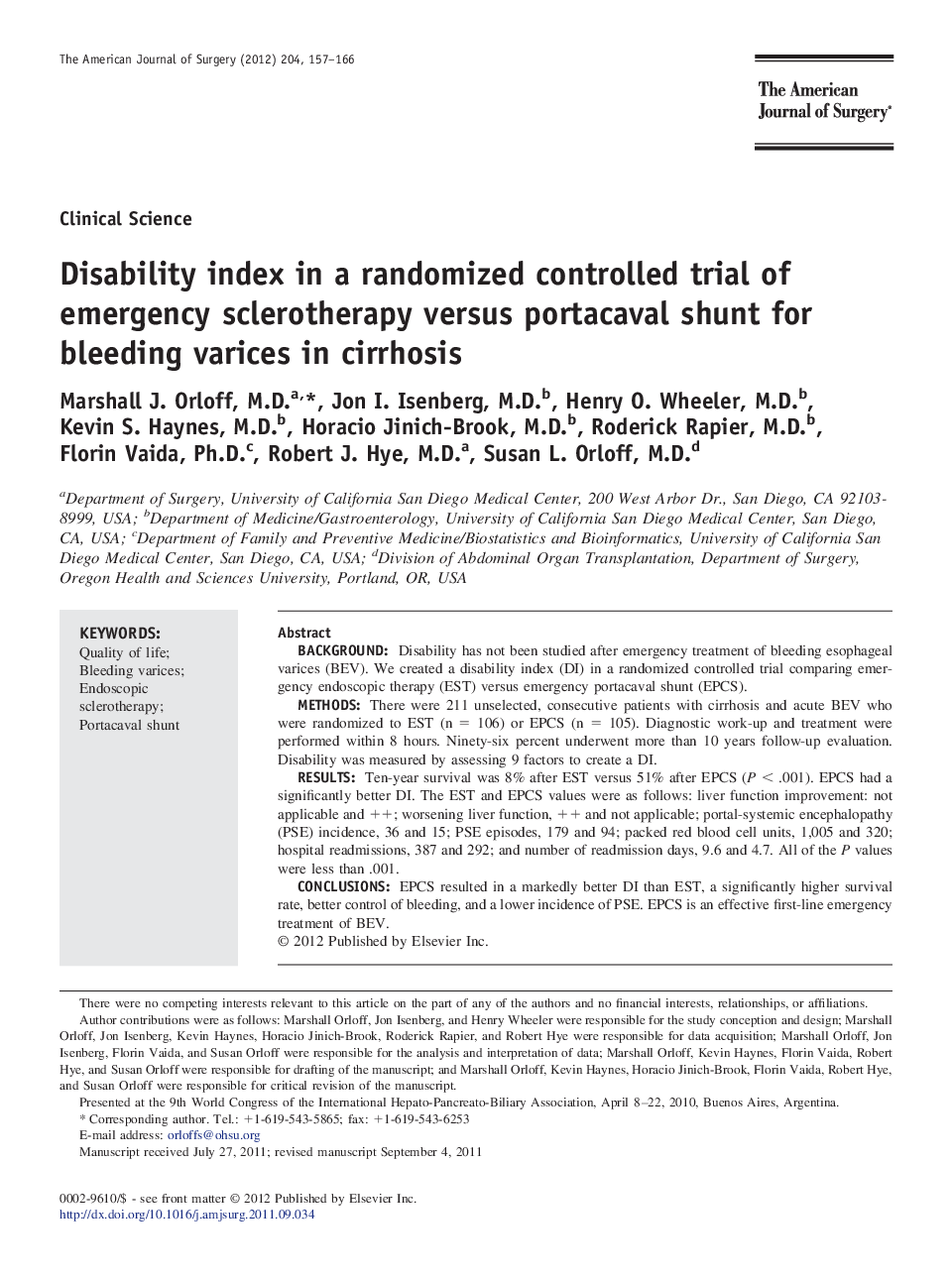| Article ID | Journal | Published Year | Pages | File Type |
|---|---|---|---|---|
| 4279548 | The American Journal of Surgery | 2012 | 10 Pages |
BackgroundDisability has not been studied after emergency treatment of bleeding esophageal varices (BEV). We created a disability index (DI) in a randomized controlled trial comparing emergency endoscopic therapy (EST) versus emergency portacaval shunt (EPCS).MethodsThere were 211 unselected, consecutive patients with cirrhosis and acute BEV who were randomized to EST (n = 106) or EPCS (n = 105). Diagnostic work-up and treatment were performed within 8 hours. Ninety-six percent underwent more than 10 years follow-up evaluation. Disability was measured by assessing 9 factors to create a DI.ResultsTen-year survival was 8% after EST versus 51% after EPCS (P < .001). EPCS had a significantly better DI. The EST and EPCS values were as follows: liver function improvement: not applicable and ++; worsening liver function, ++ and not applicable; portal-systemic encephalopathy (PSE) incidence, 36 and 15; PSE episodes, 179 and 94; packed red blood cell units, 1,005 and 320; hospital readmissions, 387 and 292; and number of readmission days, 9.6 and 4.7. All of the P values were less than .001.ConclusionsEPCS resulted in a markedly better DI than EST, a significantly higher survival rate, better control of bleeding, and a lower incidence of PSE. EPCS is an effective first-line emergency treatment of BEV.
